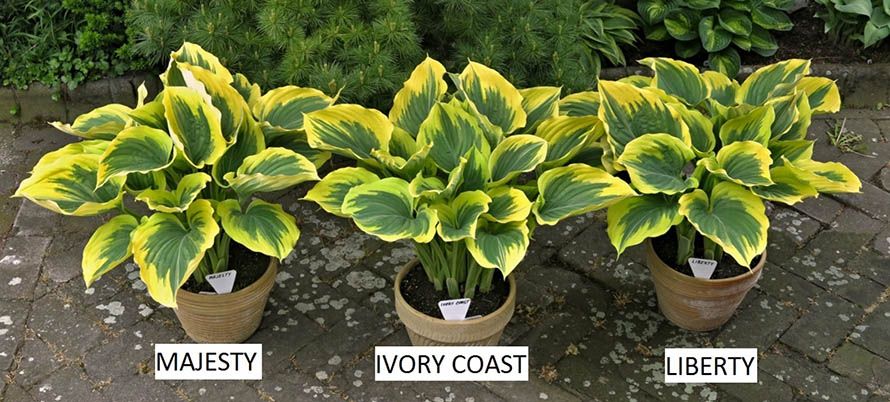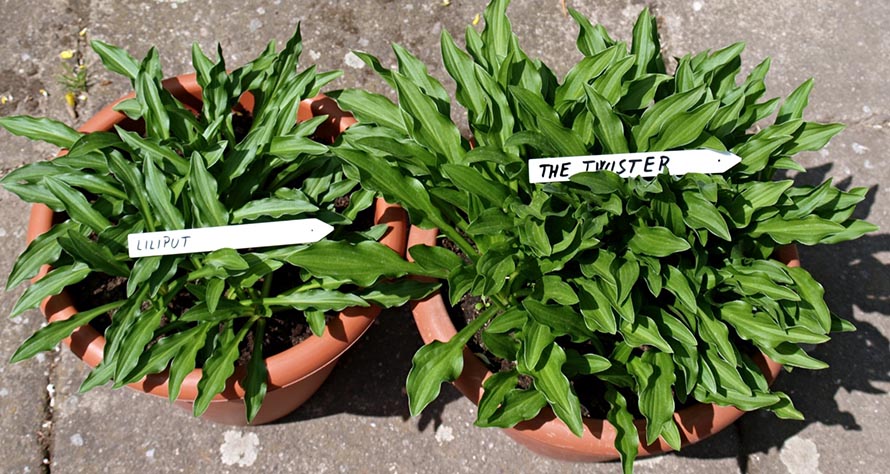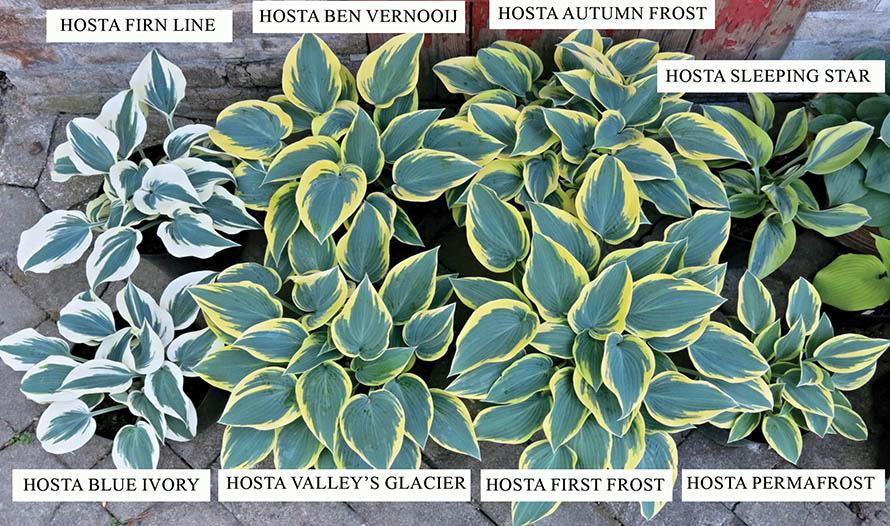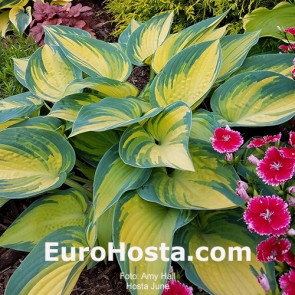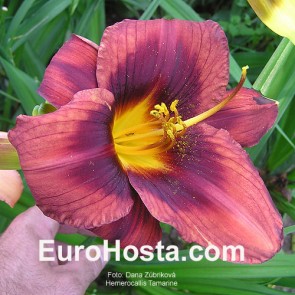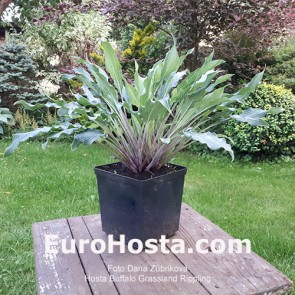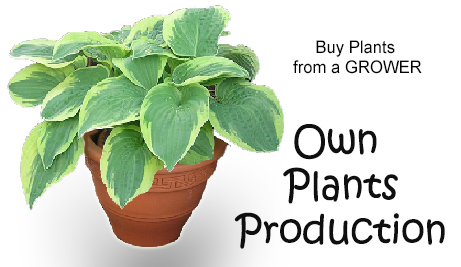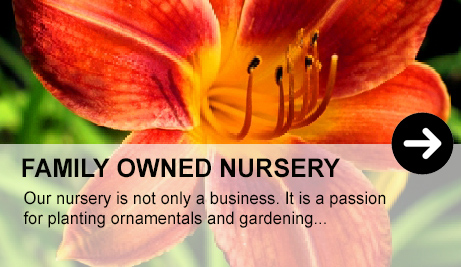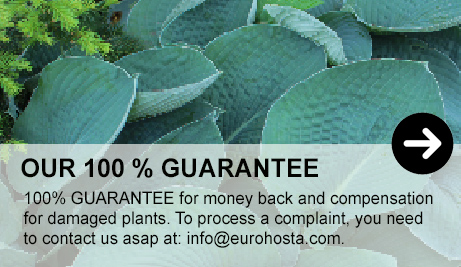Similar or the same? Text and photo: V. Mirka, August 2017
|
Two different pictures, two different prices, two different cultivars. However, pictures are always taken under specific conditions... So, you put these two different hosta cultivars into the basket in an e-shop. You plant them, but you are in for a surprise the next spring. It seems you have two very similar, or even almost identical plants in the garden! What went wrong? Why is this so? What went wrong? There are more than 10,000 hosta cultivars registered worldwide. Green, yellow, blue etc. in different colour combinations, different shapes. It is therefore quite understandable that many cultivars are very similar. But identical? Mistakes happens and we at Eurohosta can also make a mistake when sending the plants. Tell us and we will exchange your plants for free. But not only we can make a mistake. Also any hosta grower and hosta producer in the world can make a mistake, if not now, maybe even many years ago… So today, we have on the marked hosta cultivars, which do not look like the ones on the picture on the internet. Because somebody made a mistake.... To have two or three similar cultivars, may have a certain importance for the plant collectors who want to complete their hosta collections. However, for all other, less specialized gardeners this is not a desirable situation. To avoid confusion when buying two different hosta cultivars, we bring you some useful information. Which cultivars are similar and which are even identical? We are happy to publish a discussion paper on this issue. SAME HOSTA – DIFFERENT NAME by V. Mirka Have you ever experienced, that you have unpacked the plants shipped from a seller and you suddenly had the feeling, that you already have such or very similar plant somewhere in your garden? Well, the new one is still small, let it to grow, it will surely be different... You plant it and wait and wait... after two years you say, these two plants still seem to be quite the same. To be sure, you grow both plants close to each other, in the same soil, light and moisture conditions. OK, next year you will be sure - these plants are the same!!! The plants have exactly the same clump shape, the same leaf shape as well as colour, and also the same shape and colour of the flowers, and even the same markings on the flower petals... How is this possible? What went wrong? Can this be claimed? And how many hosta plants that are this similar are on the market? I had asked myself these same questions when this happened for the first time to me. I compared the plants very carefully, made notes, photographed and checked on the websites of hosta growers and sellers. To reduce the risk of possible confusion or mistake by a certain hosta seller, I bought the same cultivar from different sources/sellers. I never found any differences... Today I want to share my thoughts with you. I will first mention hybrids and then sports. Finaly, it is up to you, to make your own opinion. This issue is interesting, and rather quite common today in the entire horticultural business -:-)- selling the same plants under different names. If one hosta can produce a sport, the same hosta clone can produce an identical sport somewhere else too, especially if very large numbers of in-vitro propagated plants are produced. This can happen. What is a bit strange to me is, that someone spends the time to name such a plant, register it or even patent it. I’m an amateur grower, hostas are my hobby. I’m not a hosta seller and I do not understand marketing strategies. I noticed, however, that this “phenomenon” affects expressive, beautiful and high-quality plants that are bestsellers :-). It seems like a sensation. But when I imagine that there are over ten thousand hosta cultivars, these few duplicates may seem a bit amusing, and for somebody maybe irrelevant.
A - Hybrids That two absolutely identical plants aren’t sports, but are hybrids of two completely different parents, seems quite unexplainable to me! 1/ 2/ 3/
B - Sports Here are a number of sports derived from ‘Halcyon’, within which duplicates are the most common. Halcyon – white (yellow creamy)-margined sports - overview - El Nino® (P. Warmerdam) - Great Escape® (J. van den Top) - Blue Ivory® (Meyer/Klinkhamer) - First Frost (P. Scolnik/R. Solberg) - Autumn Frost® (Walters Gardens Inc./H. Hansen) - Sleeping Beauty (Walters Gard. Inc.) - Sleeping Star (J. van den Top) The indistinguishable ones with a white margin are Great Escape, Blue Ivory and Firn Line. Halcyon – sporty s pestrým středem - přehled - June® (Neo Plants Ltd) - High Society® (H. Hansen/Shady Oaks Nursery) - Catherine (G. Heemskerk) - Magic Island (G. Heemskerk) - Cream Topping (G. Heemskerk) - Timeless Beauty (G.Heemskerk) - Dinner Jacket (England) ? Grand Marquee (M. Laviana/A. Malloy; Carder Blue sport !?!) In my garden Catherine, Grand Marquee, Magic Island, Timeless Beauty, Touch of Class and Cream Topping are completely indistinguishable and I have been growing them next to each other in the same bed for the third year now . I don’t have Dinner Jacket, but as Fransen says the plant is identical with Touch of Class. So I added it here as well. Grand Marquee is supposedly a sport of Carder Blue, but it is completely indistinguishable from Touch of Class. All the above-mentioned cultivars looks the same and also feel the same to the touch. I’m not Ben Zonneveld, so I don’t dare to speculate whether some of them are completely tetraploid, partially tetraploid or diploid - judging by the look and touch they are the same. Someone is truly lucky with these sports :-) 1/ 2/ 3/ 4/ 5/ 6/ 7/ 8/ 9/ Thus, if you also have some suspiciously similar plants in your garden, do not worry about it. These are all great plants and if you do not want these “duplicates”, I am sure your friends will be pleased and they will grow in the garden of your friends just as well. After all, now you can purchase some new hosta plant, a cultivar you have not had until now, and plant it in the empty place. I am sure, you have very little space in your garden! And since there are so many cultivars on the market, everyone’s garden is too small!
© This text and photos are protected by intellectual property rights under the Law no. 618/2003 Coll. (the Copyright Act). |
||||

